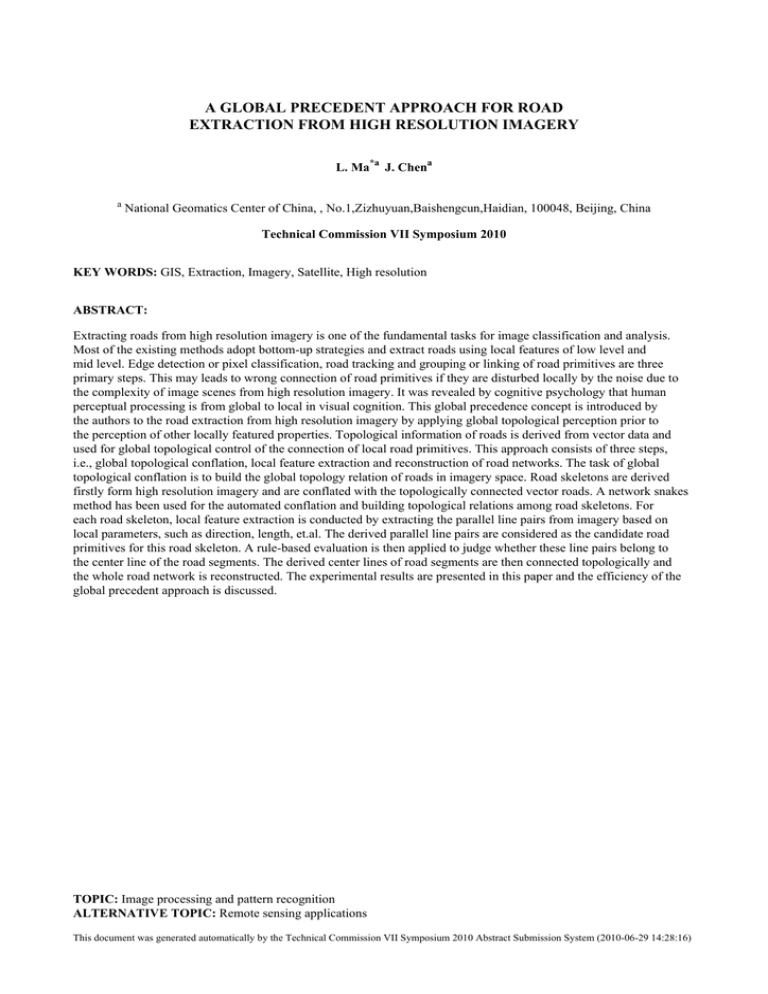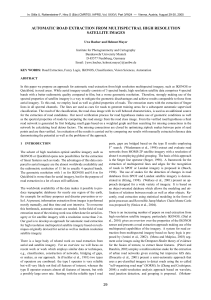A GLOBAL PRECEDENT APPROACH FOR ROAD EXTRACTION FROM HIGH RESOLUTION IMAGERY
advertisement

A GLOBAL PRECEDENT APPROACH FOR ROAD EXTRACTION FROM HIGH RESOLUTION IMAGERY L. Ma*a J. Chena a National Geomatics Center of China, , No.1,Zizhuyuan,Baishengcun,Haidian, 100048, Beijing, China Technical Commission VII Symposium 2010 KEY WORDS: GIS, Extraction, Imagery, Satellite, High resolution ABSTRACT: Extracting roads from high resolution imagery is one of the fundamental tasks for image classification and analysis. Most of the existing methods adopt bottom-up strategies and extract roads using local features of low level and mid level. Edge detection or pixel classification, road tracking and grouping or linking of road primitives are three primary steps. This may leads to wrong connection of road primitives if they are disturbed locally by the noise due to the complexity of image scenes from high resolution imagery. It was revealed by cognitive psychology that human perceptual processing is from global to local in visual cognition. This global precedence concept is introduced by the authors to the road extraction from high resolution imagery by applying global topological perception prior to the perception of other locally featured properties. Topological information of roads is derived from vector data and used for global topological control of the connection of local road primitives. This approach consists of three steps, i.e., global topological conflation, local feature extraction and reconstruction of road networks. The task of global topological conflation is to build the global topology relation of roads in imagery space. Road skeletons are derived firstly form high resolution imagery and are conflated with the topologically connected vector roads. A network snakes method has been used for the automated conflation and building topological relations among road skeletons. For each road skeleton, local feature extraction is conducted by extracting the parallel line pairs from imagery based on local parameters, such as direction, length, et.al. The derived parallel line pairs are considered as the candidate road primitives for this road skeleton. A rule-based evaluation is then applied to judge whether these line pairs belong to the center line of the road segments. The derived center lines of road segments are then connected topologically and the whole road network is reconstructed. The experimental results are presented in this paper and the efficiency of the global precedent approach is discussed. TOPIC: Image processing and pattern recognition ALTERNATIVE TOPIC: Remote sensing applications This document was generated automatically by the Technical Commission VII Symposium 2010 Abstract Submission System (2010-06-29 14:28:16)





